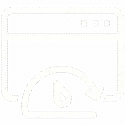
Our Ad Copy:
“Attention website owners! Are you tired of slow loading pages that drive away potential customers? Look no further! Our Page Speed Optimization services will give your website the boost it needs. We will analyze your website and implement the latest techniques to improve your page loading time, making it faster and more efficient. Say goodbye to frustration and hello to a seamless user experience. Let us help you get the most out of your online presence. Contact us today to learn more about our Page Speed Optimization services.”
The Nuts and Bolts
Page speed optimization
involves a series of steps to reduce the time it takes for a page to load for users. Here are some common approaches for optimizing page speed:
These are some of the common approaches to optimize page speed. However, specific optimization strategies will vary based on the size and complexity of your site, as well as the technologies used.

